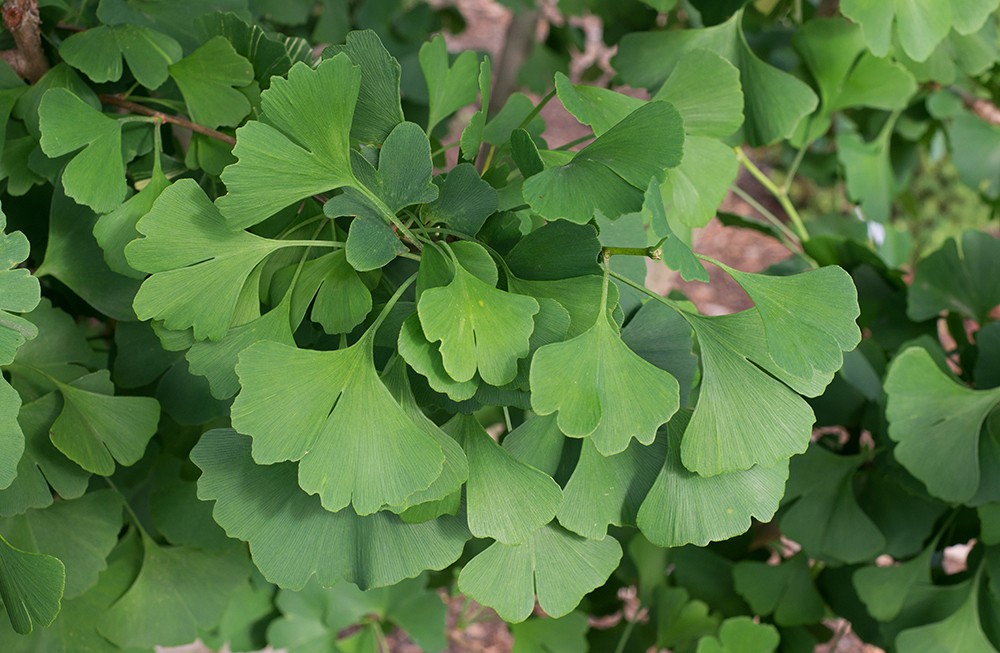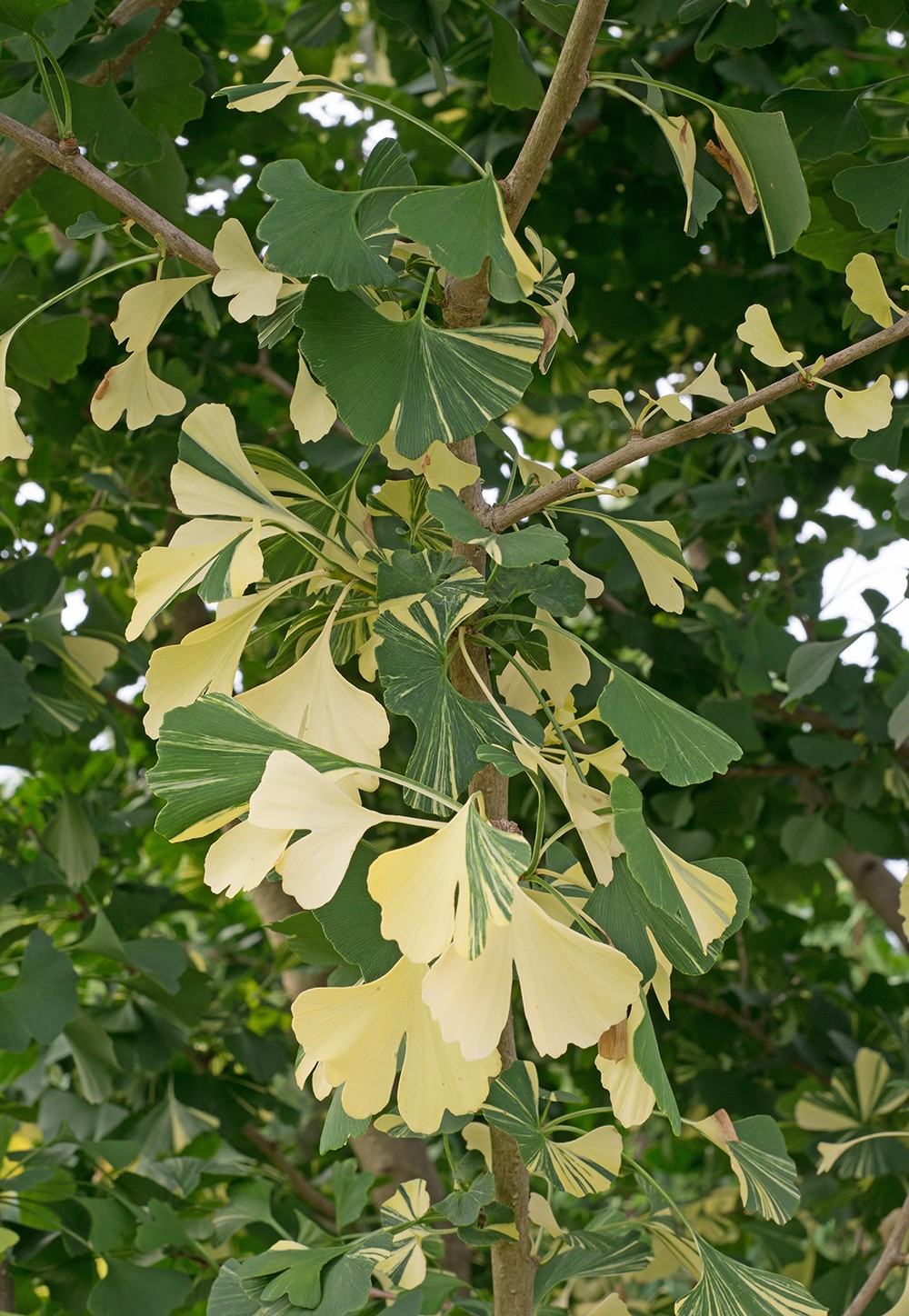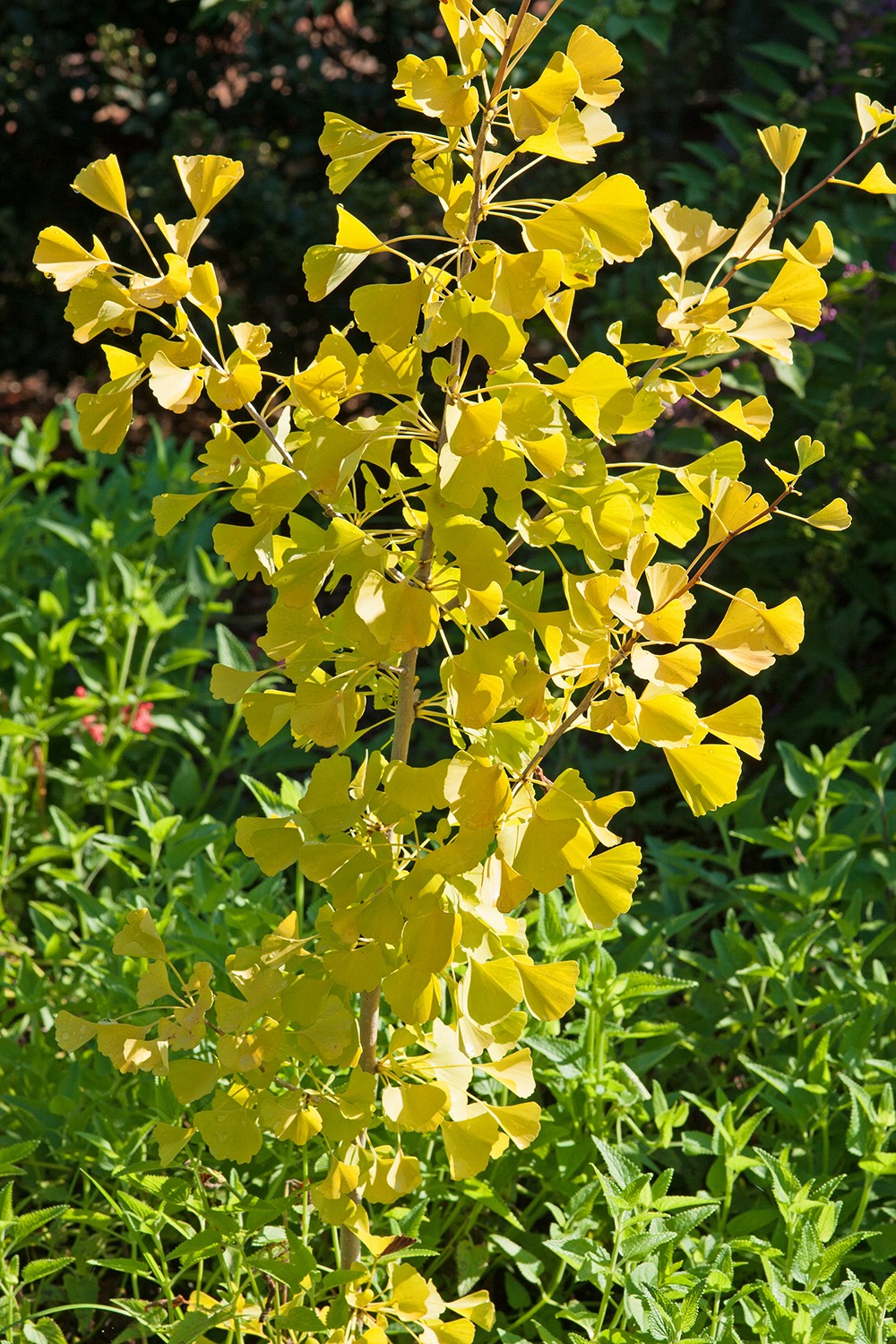Autumn is the perfect time to plant woody ornamentals, and if you are looking for a real conversation piece, grab a ginkgo tree (Ginkgo biloba). What’s so special about ginkgo? For starters, it is very old — set your time machine back to 200 million years ago, and you will find ginkgo in full flaunt. Also, with apologies to Charles Darwin, it forgot to evolve and has remained relatively the same over the eons. Call ginkgo a living fossil, if you will.
So, the ginkgo is ancient — now add otherworldly. During the spring and summer, a typical ginkgo exhibits the same green-ness of many other shrubs and trees, which, from a distance, appears rather ho-hum. But closer inspection reveals weird, fan-shaped leaves that look like they would fit perfectly in an Avatar sequel.
Ginkgo got your attention yet?

Ginkgo Leaves
Ginkgo trees are tough, too. I’ve seen them doing quite well on local mall parking lot berms and traffic islands in full sun, so in a pampered backyard, they will certainly thrive.
A species ginkgo will stretch to more than 60 feet tall with a 35-foot-plus spread, so give it room. As an alternative, consider a dwarf ginkgo. There are many mini-cultivars available, with examples being ‘Thelma,’ which tops out at around 10 feet, ‘Troll’ (4-5 feet), and the uber-short ‘Mariken’ (2-3 feet).
If you fancy more flash, variegated ginkgo trees are also available. I have enjoyed a ‘White Lightning’ with its leaves scratched by pale yellow for several years. It is another shorty, only stretching to about 12 feet high.
Ginkgo trees are dioecious, meaning there are female and male trees. Many new cultivars are ginkgo guys, and this is on purpose. Female ginkgo trees produce nuts, which, after falling to the ground, begin to smell worse than nasty. So, unless you enjoy stink, skip female ginkgo selections.

Ginkgo White Lightning
Ginkgo trees won’t be found at every garden center, but it is still worth asking the staff if they can order a particular cultivar. Online shopping is always an option, and MrMaple Nursery (mrmaple.com) in East Flat Rock, NC, offers a large ginkgo selection.
Finally, an additional ginkgo plus: In the fall, when colder temperatures arrive, its foliage will turn a handsome yellow. This show will linger but a few days, and then, almost in unison, all the leaves desert their branches, forming a carpet of chilled gold under a bare tree. Quite a sight — one worth talking about.
If you see what looks like dull brown, oblong ornaments hanging in needled evergreens such as pines, juniper, and arborvitae, it’s not Christmas coming early — they are the winter homes of bagworm eggs, which can range from 500 to 1,000 per bag. In the spring, the eggs will hatch into small, pesky caterpillars that crawl from their dangling domiciles and start munching on the host foliage. While insecticides will be effective in the spring, they won’t be of much use now, but you can still help curb bagworms’ springtime garden party this month by snipping off the silk bands they droop from and trashing the casings.
To Do in the Garden
October
- If you are still mowing your yard when autumn leaves start to drop, think about bagging the results. This combination of dry fallen foliage and fresh grass clippings makes an excellent starter for a compost pile.
- Tomatoes that are still green on the vine can be harvested before the first frost bite and brought inside to ripen. Wrap each fruit lightly in a piece of tissue paper and place in an area out of direct sunlight. Check on the tomatoes weekly and use them as they turn red.
- If you are an impatient gardener, pick some of your green tomatoes and enjoy an ol’ kitchen tradition by looking up online any of the many recipes for fried green tomatoes.
- Thinking about hanging onto your Halloween pumpkin for Thanksgiving festivities? Carved jack-o’-lanterns won’t last long, of course, but whole pumpkins will store nicely in a dry, cool place out of direct sunlight. If you spot any mold on the rind, it can be wiped off with a cloth lightly dipped in vegetable oil.
- Hole-in-the-Wall Haunts
- Soup-er Salads
- Naked and Afraid’s Wes Harper
- Restaurant Profile: Colletta
- Fountainhead of Flavors
- Erica Chats: Quick and Easy DIY Projects for Your Fall Gatherings
- Things to Do: October 2022
- Nonprofit Spotlight: Pretty In Pink Foundation
- On Trend: Hibiscus
- Small Business Spotlight: Raleigh Cheesy
- Garden Adventurer: Conversation Piece: The Ginkgo Tree
- Liquid Assets: Blood Moon India Pale Ale by bmc brewing
- Liquid Assets: An Old Fashioned Fall Day







